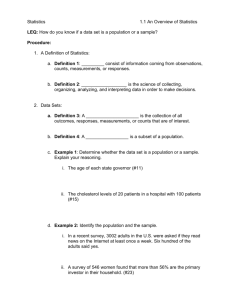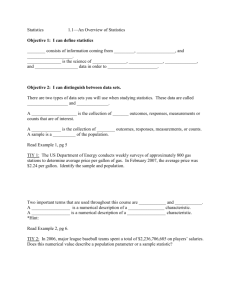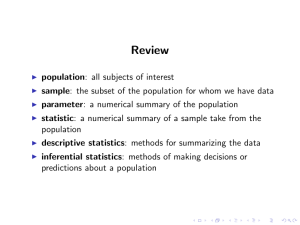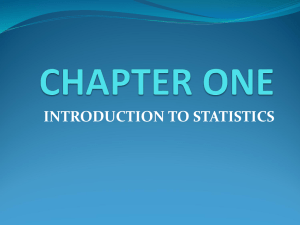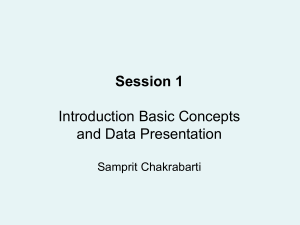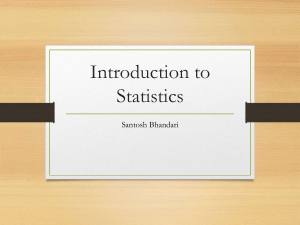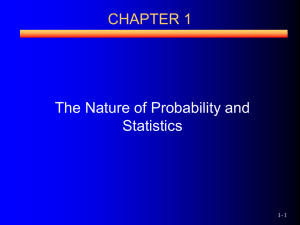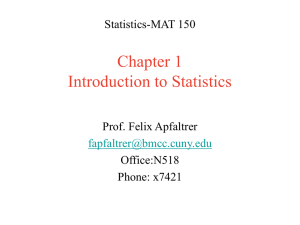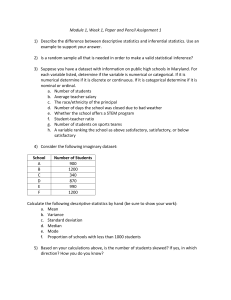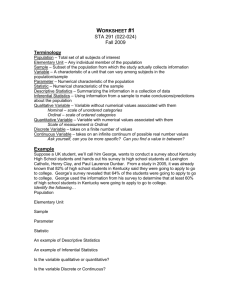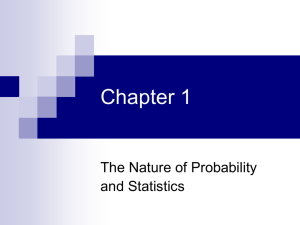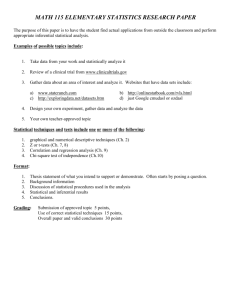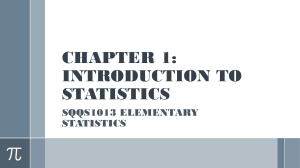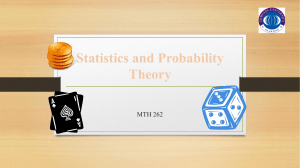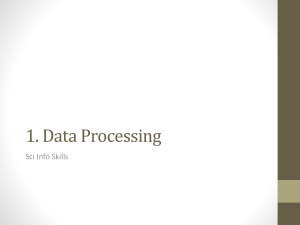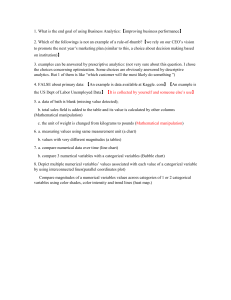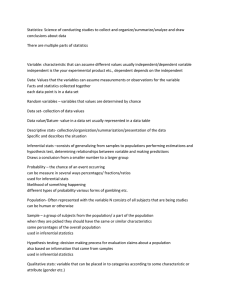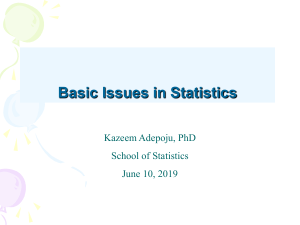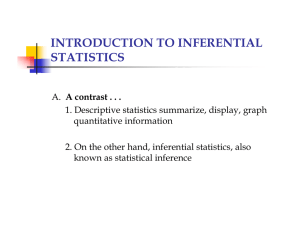Chapter 1
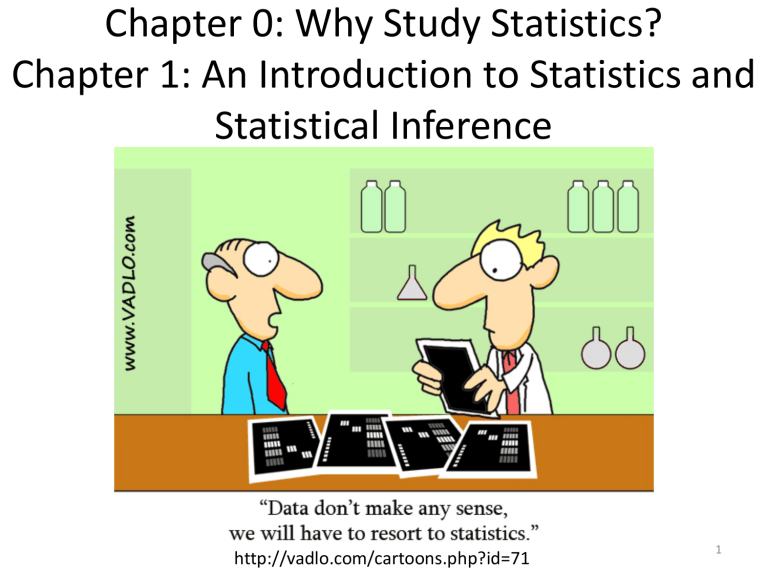
Chapter 0: Why Study Statistics?
Chapter 1: An Introduction to Statistics and
Statistical Inference http://vadlo.com/cartoons.php?id=71
1
0,1: Introduction: Goals
• Create your own definition of statistics.
• State some applications of Statistics for your field.
• State the branches of statistics and briefly describe each one.
• Define: Population, sample, variable
• Differentiate between probability and statistics.
• Be able to solve word problems in statistics.
2
What is Statistics
• Statistics is the science of collecting and interpreting data.
• Components
– Collection
– Organization
– Analysis
– Interpretation
3
Applications of Statistics
• Computer Science client-server performance image processing
• Chemistry/Physics determining outliers in your data linear regression propagation of error dealing with large populations and approximations
• Engineering is one process/technique better than another one?
• Business
Making good decisions
• Everyday life
Medical information
Average cell phone usage of Purdue students 4
Branches of Statistics
• Collection of data
• Descriptive Statistics
– Graphical and numerical methods used to describe, organize, and summarize data.
• Inferential Statistics
– Techniques and methods used to analyze a small, specific set of data in order to draw a conclusion about a large, more general collection of data.
5
Inferential Statistics
• Claim
– Status Quo
• Experiment
– Check claim
• Likelihood
– How likely is the experimental result consistent with the claim?
• Conclusion
– The outcome is reasonable
– The outcome is rare.
6
Definitions
• A population is the entire collection of individuals or objects to be considered or studied.
• A sample is a subset of the entire population, a small selection of individuals or objects taken from the entire collection.
• A variable is a characteristic of an individual or object in a population of interest.
– Qualitative (categorical)
– Quantitative (numerical)
7
Probability vs. Statistics
8
Solution Trail
1. Find the keywords .
2. Correctly translate these words in statistics.
3. Determine the applicable concepts .
4. Develop a vision , or strategy, for the solution.
5. Solve the problem.
9
